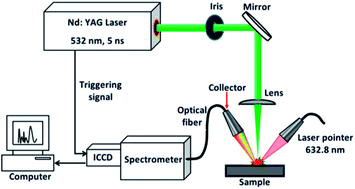Quantitative analysis of phosphorus in steel using laser-induced breakdown spectroscopy in air atmosphere
Abstract
The quantitative analysis of phosphorus in iron/steel in air atmosphere is considered a challenge for laser-induced breakdown spectroscopy (LIBS) due to strong interference from the matrix. In this study, interference from the iron and copper lines on the P I 214.91 nm line using different gate delays was studied. The interference on the P I 214.91 nm line arises mainly from the ionic lines of iron and copper in the steel. By choosing the gate delays carefully, the interference can be reduced. The spectral resolution and sensitivity of the spectrometer required for the detection of the P I 214.91 nm line in steel plasma were also studied. Based on the results, a Czerny–Turner spectrometer equipped with an intensified charge coupled device camera with a minimum spectral resolution of 0.03 nm is suggested for this application. Finally, the successful quantitative analysis of phosphorus in the UV-vis spectral range was carried out both in pig iron and a low alloy steel. For the pig iron, the R2 calibration factor was 0.9992, the limit-of-detection (LoD) was 12 ppm and the background equivalent concentration (BEC) was 0.11 wt%. For the low alloy steel, the R2 calibration factor was 0.995, the LoD was 9 ppm and the BEC was 0.05 wt%. Interference from copper lines on the P I 214.91 nm line was not observed. It has been shown that a simple LIBS setup can be used for the accurate quantitative analysis of phosphorus in iron/low alloy steel in open air.


 Please wait while we load your content...
Please wait while we load your content...